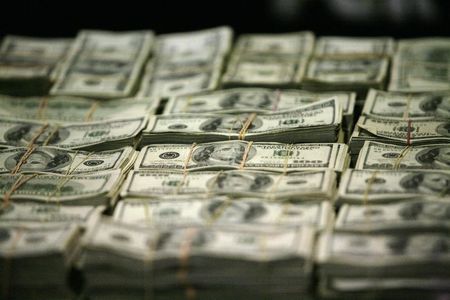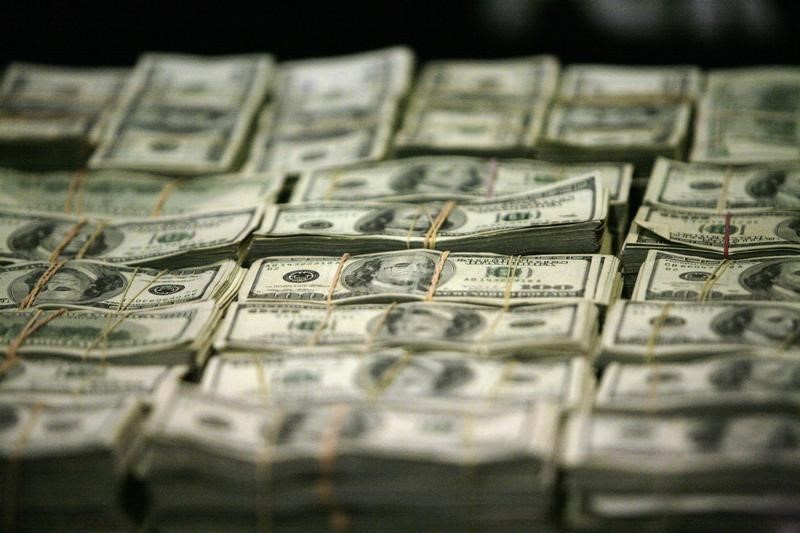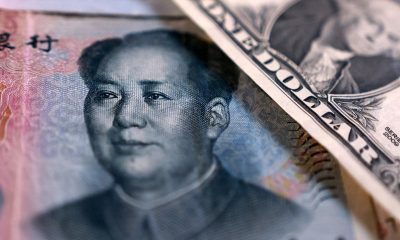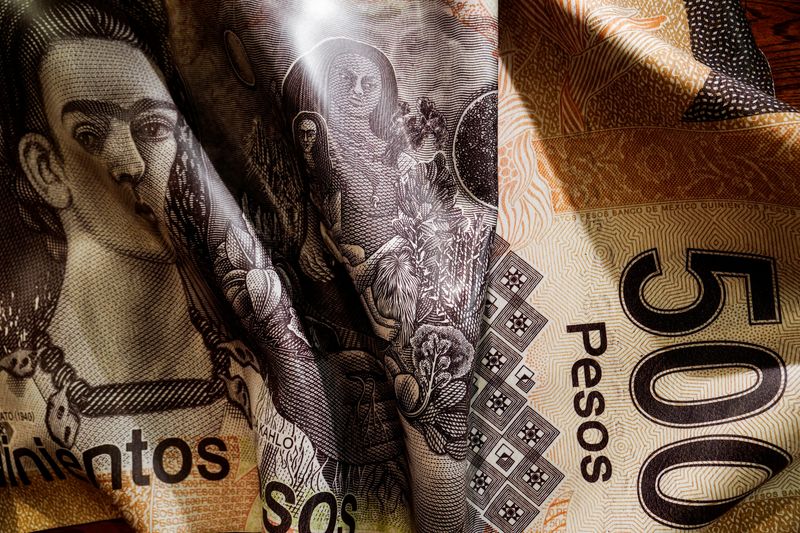Forex
Dollar edges higher, but set for sharp weekly loss as inflationary pressures ease


© Reuters.
Investing.com – The U.S. dollar edged higher in early European trade Friday, but was heading for a sharp weekly loss after cooling inflation spurred growing bets that the Federal Reserve has completed its series of rate hikes.
At 03:00 ET (08:00 GMT), the Dollar Index, which tracks the greenback against a basket of six other currencies, rose 0.1% to 104.374, still on course for a weekly loss of around 1.3%.
Dollar set for hefty weekly loss
The dollar has weakened this week growing expectations that inflation is in retreat and interest rate increases by the Federal Reserve are a thing of the past.
Tuesday’s drop in U.S. started the ball rolling, but oil slipping to four-month lows and news from Walmart (NYSE:) on Thursday that it will cut prices to help struggling consumers in the holiday quarter have added to the disinflationary pressures.
“Confidence that the Fed tightening cycle is over should be positive for the rest of the world currencies – especially those that are very sensitive to higher interest rates,” said analysts at ING, in a note.
“Yet with overnight rates in the US at 5.4%, the dollar is an expensive sell and the bar is high to invest elsewhere. That is why… the dollar bear trend is going to take some time to build and its more intense period may not be until 2Q24.”
There are a number of Fed speakers scheduled to speak later in the session, and traders will look for how hawkish they appear to be given the change in market tone.
Sterling slips after weak U.K. retail sales
In Europe, fell 0.2% to 1.2377, weakening after data showed U.K. slumped 0.3% on the month in October, an annual fall of 2.7%, as British shoppers continued to struggle from the combination of higher interest rates and still elevated inflation.
U.K. plunged to 4.6% on an annual basis in October, from 6.7% in September, data showed earlier this week.
This was the largest fall in the annual CPI rate from one month to the next since April 1992, but it still remains among the highest in the developed world, and the has sought to stress that it is nowhere near cutting interest rates from their 15-year peak, even as the economy flat-lines close to a recession.
fell 0.1% to 1.0839, but is set to gain around 1.5% this week, its largest weekly increase since mid-July.
ECB President is set to speak at the European Banking Congress in Frankfurt later in the session, and her comments will be parsed carefully for clues of the intentions of policy makers regarding interest rates after the central bank paused its cycle of hikes last month.
Yen benefits from dollar weakness
In Asia, traded 0.2% lower at 150.44, with the yen among the biggest beneficiaries of recent dollar weakness, as this pair is on track to drop 0.7% this week – its best weekly gain in over four months.
But Bank of Japan Governor Kazuo Ueda on Friday stressed on the need to maintain an ultra-dovish stance, presenting little near-term relief for the yen
rose 0.1% to 7.2464, with the yuan recovering from the one-year low seen earlier in the week, helped by data showing some signs of resilience in the Chinese economy.
Focus is now on the , which is set to decide on its benchmark loan prime rate on Monday. The bank is expected to keep rates at record lows, as it struggles to maintain a balance between shoring up economic growth and stemming weakness in the yuan.

 Forex3 years ago
Forex3 years agoForex Today: the dollar is gaining strength amid gloomy sentiment at the start of the Fed’s week

 Forex3 years ago
Forex3 years agoUnbiased review of Pocket Option broker

 Forex3 years ago
Forex3 years agoDollar to pound sterling exchange rate today: Pound plummeted to its lowest since 1985

 Forex3 years ago
Forex3 years agoHow is the Australian dollar doing today?

 Cryptocurrency3 years ago
Cryptocurrency3 years agoWhat happened in the crypto market – current events today

 World3 years ago
World3 years agoWhy are modern video games an art form?

 Commodities3 years ago
Commodities3 years agoCopper continues to fall in price on expectations of lower demand in China

 Economy3 years ago
Economy3 years agoCrude oil tankers double in price due to EU anti-Russian sanctions


























